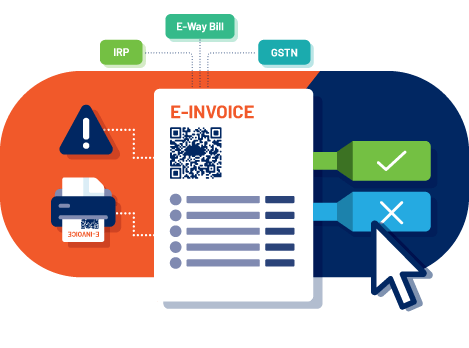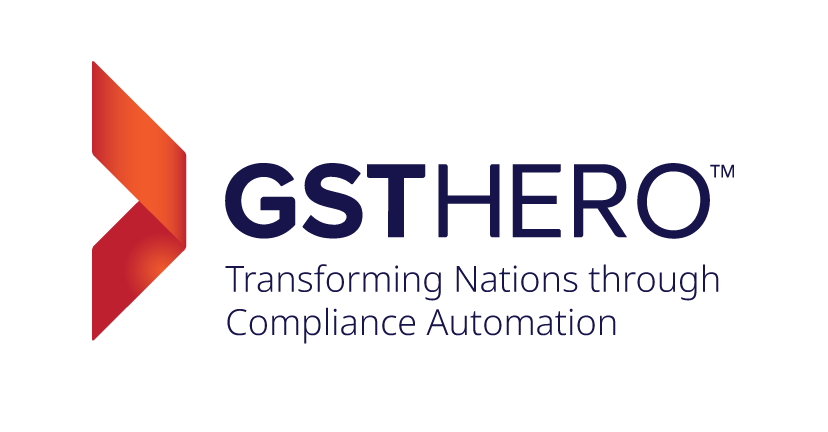The arrival of the New GST Return System & e-invoicing in the near-future spectated to be implemented by October 2020, has raised the requirement of taking the management of Invoices into deliberation. e-Invoice Applicability & management required for the firms.
In this article let's cover the most emphasized facts about the changes brought to Invoicing under the new system, how to manage the invoices, involved processes, and the actions required feature.
Be completely aware of the updated Invoicing & its Management by the end of the article.
Get Free Bonus Report: Discover how to automate e-Invoicing
You may also interested in reading below posts:
Comparative Analysis of Invoice Management & Reporting
The difference between invoice management in the current system & up-coming system may not be huge but the effects are definitely conspicuous.
In the current system, the B2B, B2C, Export invoices & Debit and Credit Notes are reported in the form GSTR-1, which auto-populates the Buyers' GSTR-2A.
The Buyers can make no changes to these read-only files.
Unlike the above in the New GST Return System, these documents will be declared in an annexure, Annexure-1 (Sales) which will auto-populate the Buyer's Annexure-2 (Purchase).
To this Anx-2 the Buyers are allowed to take actions such as accepting, pending, or rejecting the Invoices.
Any action taken by the Recipient will be informed of to the Supplier & then they can make the further amendments to the returns.
The Annexures further partake in the main return filing in forms GST RET-1, RET-2, or RET-3.
Unlike in the current system, where the invoices are uploaded at month-end, in the new system the invoices can be submitted on a real-time or daily basis.
This is advisable to the Taxpayers since the invoices shall then have to wait for the Recipients' actions as well, which may take time & the same is required to be done within a time-frame.
This whole shift in the reporting & the system increases the importance of Invoice management in the New GST Return System if you wish to make your filing efficient & claim maximum ITC.
The perfection of both of these is vital for your Business as one can save you from penalties & the other one can maintain the cash-flow of your Business.
Annexure-2 : Actions required under New GST Returns

Annexure-2 is the replacement of form GTR-2A in the New GST Return Regime, & is the purchase declaration which is auto-populated from the Suppliers' Sales Annexure.
Although one feature makes Annexure-2 different form GSTR-2A, the fact that GSTR-2A was in read-only form whilst you have to take actions on invoices as a Recipient in Anx-2.
You can choose to lock or confirm the Invoice, mark the Invoices pending, and reject the Invoices, this feature was not available in GSTR-2A.
As the recipient's actions are required in the invoices, before the supplier files their GST RET-1, it becomes important for the Suppliers to declare them a little before time.
Again the vendor communication gains essence in this situation. On taking the action the recipient's & suppliers must communicate, discuss the same and make the required amendments.
If the recipient does not take any actions on the invoices the invoices shall be deemed to be accepted or locked.
Once the invoice is locked by the recipient the supplier can make no changes to it, he will have to communicate with the recipient again to unlock or reject the invoice in order to make any changes to it.
If not the supplier can also create a credit or debit note against such invoices to make adjustments or nullifying the invoices.
Get Free Bonus Report: Discover how to automate e-Invoicing
Get E-Invoicing Ready
GSTHero e-invoicing software - Easiest and fastest way to generate e-invoice
Significant Role of e-Invoicing in Invoice Management
E-Invoicing is expected to be implemented along with the New GST Return System & the link between the two is quite obvious.
The e-Invoicing system will transfer the Invoice data on a real-time to the GST Portal, E-Way Bill Portal & to the Suppliers and Recipients.
The timely data transfer will ease up quite a lot of things for both the suppliers as well as the recipient. As the data will be shared with both parties in real-time there would be fewer chances of errors in the first place.
Note – Details will be updated from e-Invoicing on GST Portal and E-Way bill only if it clears validation as required by these portals.
Here is an illustration to understand the sync between e-Invoice & the annexures better-
Mr. Singh is a Supplier & makes a sale to Mr. Joshi.
Mr. Singh will have to upload the invoice for e-Invoicing to the IRP, upon successful validation, the e-Invoice & its data will be shared to the Recipient-Mr. Joshi, the GST Portal, and the e-Way Bill Portal (if required).
Mr. Joshi can verify the Invoice details in real-time & the same will be populated in Mr. Singh's Anx-1 and from there Mr. Joshi's Anx-2.
Later Mr. Joshi can take actions on these invoices, such as accepting, rejecting, or pending them, depending on the correctness & whether they want to claim ITC for the invoice in that tax period or not.
Form the illustration above, it is clear how e-Invoicing minimizes the efforts at an earlier stage, so it will only be beneficial for Businesses to be well prepared & compliant with e-Invoicing.
GSTHero is the best GST Software Solution for the purpose as it provides the site-to-site integration to ease up e-Invoicing & enables you to easily perform all the e-Invoicing operations from within your ERP.
Detailed Guide on Actions required on Annexure-2

Now let us have a deeper look into the actions required to be taken by you as a Recipient in Annexure-2, before the main filing of your GST Return.
1. Locked & deemed Locked Invoices:
The locking of invoices is nothing but a confirmation of authentication of the Invoice from your end. The locking is done when you either accept or mark the invoice pending for a later tax period.
Once you take either of these actions on your invoice it is locked & the supplier can make no further changes to it, unless you unlock it by rejecting the invoice.
The Invoice will however be deemed as locked also incase you take no actions on it in the given time span.
You can simply mark the concerned invoices pending or reject them & leave the rest of the invoices as it is & it will be deemed accepted.
This is a neat trick while dealing with a higher volume of invoices.
2. Pending Invoices:
Marking Invoices pending is solely an action that will affect you and not the supplier. You can mark your Invoices pending in case you haven't received the goods yet or if you wish to claim the ITC on that invoice at a later date. The Invoice will auto-populate in the Anx-2 of the next month & then you can claim the ITC for the same.
3. Rejecting Invoice:
In case the supplier declares wrong details in any invoice or declares a wrong invoice in their Anx-1 then you can reject such invoices in your Anx-2. The supplier will be notified of this action, although you will have to take follow-ups from the supplier & inform them to make changes to these invoices.
4. Missing Invoices:
A missing invoice in the New GST Return System is the invoice that is available with the recipient but the supplier hasn't declared it in the Anx-1
The recipient can claim provisional ITC on missing invoices, but if the supplier doesn't declare those invoices within two months after tax period (T+2 for monthly filers & T+1 for quarterly filers) then you will have to reverse the ITC amount you may have to pay interest on the same.
5. Report a missing Invoice:
You can declare the missing invoices in Anx-1 & its ITC in the GST RET-1 form. If such invoices are later declared by the Supplier, it will be reflected in Anx-2 where such invoice will be accepted by the recipient and then he will have to reverse the provisional credit & adjust it as ITC like in the current system to avoid double claiming of the same credit.
6. Amending Missing Invoices under New GST Return:
You can amend the missing invoices in the form Anx-1A of the tax period to which the Invoices relates.
Additionally, you can make adjustments to the ITC amount in GST RET-1 in Table 3A. Make sure to declare the missing invoices before the recipient losses their credits.
Get Free Bonus Report: Discover how to automate e-Invoicing
Get E-Invoicing Ready
GSTHero e-invoicing software - Easiest and fastest way to generate e-invoice
Conclusion
The management of invoices must be a priority task for Businesses considering the constant changes that are introduced in the GST Regime.
If you wish to properly maintain the cash flow of your Business it is important that you start paying attention to how your Invoices are managed & used while claiming Credits or declaring the Tax Liabilities.
Errors in declaring the Invoices both for Tax Liability or claiming Credit can lead to loss of credits or penalties, both of which are monetary losses for your Business.
In such conditions it becomes vital that you prepare your Business for e-Invoicing which will enhance the quality of Invoice management & help you avoid errors & miss invoices.
e-Invoice is a systematic & transparent tool to help you dodge trouble in GST System. But apart from e-Invoice you must also increase the manual accuracy by dedicating a personnel for managing & keeping an eye on Invoices.
Here, GSTHero can benefit you to the fullest, GSTHero’s Reconciliation tools & e-Invoicing Solution can be the best combo for Managing the Invoices perfectly in the ERP & cloud system of GSTHero.
Click here to schedule a demo & know more.

Generate complete and ready-to-use
e-Invoices in just
1-click !
Generate e-Invoices directly from your ERP Hassle-free

